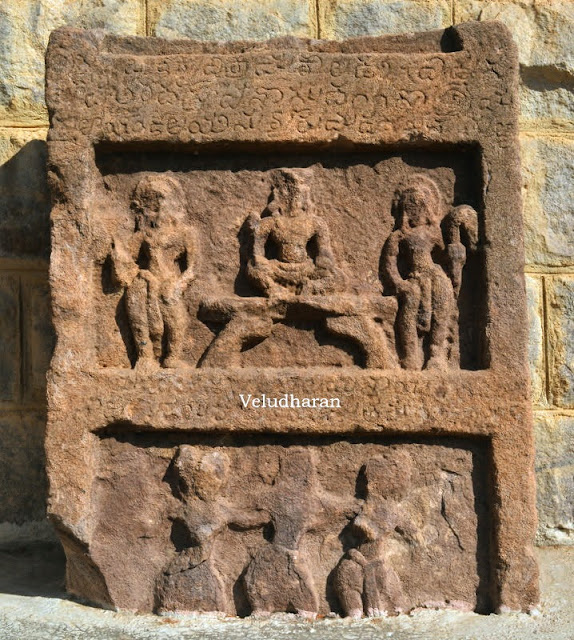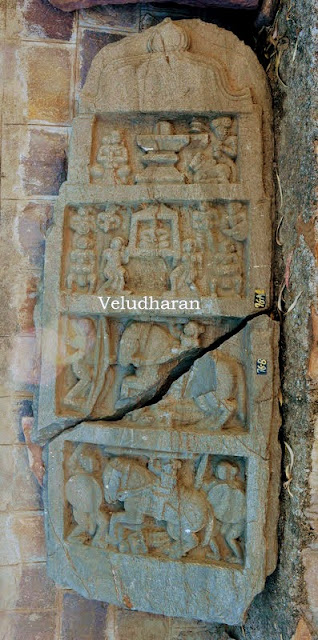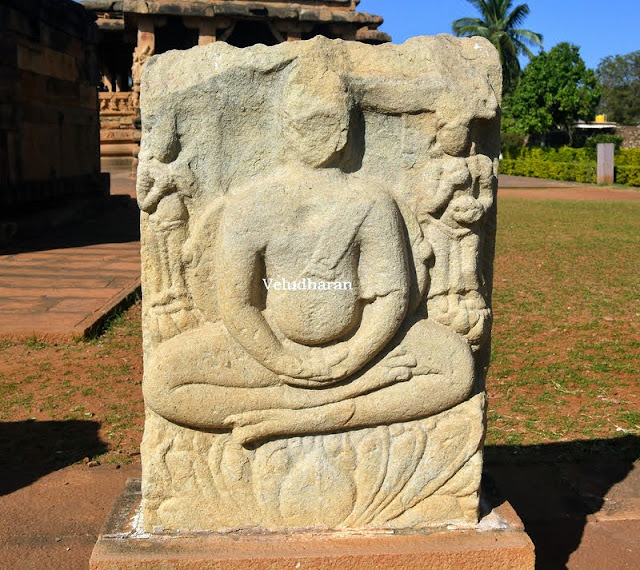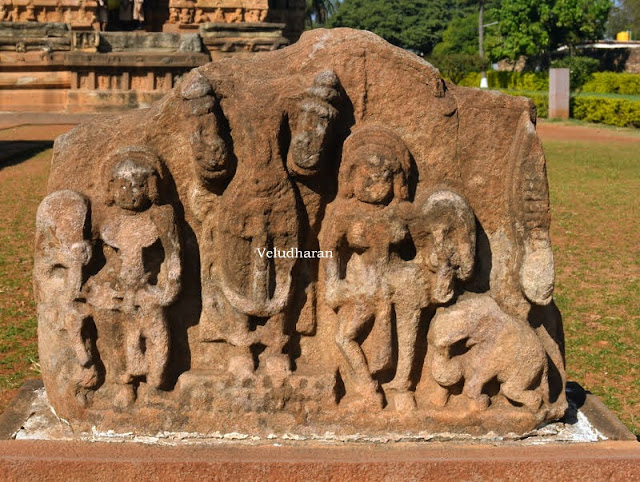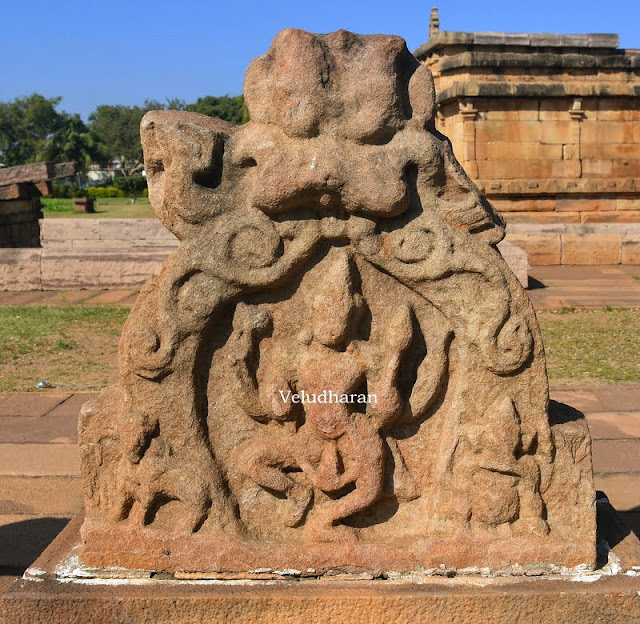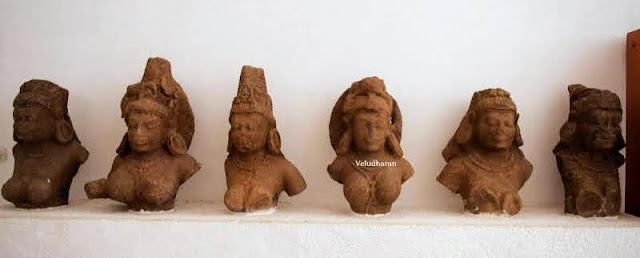The visit to this Kudure gombe (Toy horse) Mandapa and Pushkarani on
the way to Vittala Temple at Hampi, was a part of “The Hampi, Badami, Pattadakal,
Mahakuta and Aihole temples Heritage Visit” organized by வரலாறு விரும்பிகள் சங்கம் Varalaru Virumbigal Sangam – VVS and எண்திசை வரலாற்று மரபு நடைக்குழு, between 24th December to 28th December
2022. I sincerely thank the
organizers Mrs. Radha, Mrs. Nithya Senthil Kumar, and Mr. Senthil Kumar.
மொத்த ஹம்பியிலும் யாழி
மற்றும் சிம்ம தூண்களைக் கொண்டு கட்டப்பட்ட மண்டபங்களில் இருந்து மாறுபட்டு குதிரை ஓட்டும் வீரர்கள் தூண்களைக் கொண்டு 16
ஆம் நூற்றாண்டில் கட்டப்பட்ட குதிரை கோம்பே (குதிரை பொம்மை) மண்டபம் அல்லது விஷ்ணுவிற்காக
கட்டப்பட்ட கோயிலும், அதன் எதிரே அமைந்துள்ள நீராழி மண்டபத்துடன் அமைந்த கோயில்
குளமும் மிகவும் சிறப்பு வாய்ந்தவைகள் ஆகும்.
குதிரை கோம்பே மண்டபம் எனப்படும் விஷ்ணு கோயில் கருவறை,
இடைநாழி, அர்த்தமண்டபம் மற்றும் முக மண்டபத்துடன் கட்டப்பட்டு உள்ளது. கருவறை உபானம்,
பத்மம், கண்டம். கபோதம், கம்பம் போன்ற உருப்புக்களை அடக்கிய உயர்ந்த
அதிட்டானத்தின் மீது கட்டப்பட்டு உள்ளது. கபோதத்தில் கீர்த்திமுகம் அழகாகக்
காட்டப்பட்டுள்ளது. மண்டப தூண்களில் வைஷ்ணவ சமயம் சார்ந்த புடைப்புச் சிற்பங்கள்
காணப்படுகின்றன. குதிரை ஓட்டும் வீரர் தூண்கள் காணப்படுவதால், இம்மண்டபம் அவர்களுக்காக
வணிகர்களால் கட்டப்பட்டு இருக்கலாம் என்ற கருத்து நிலவுகின்றது.
The specialty of these Kudure Gombe Mantapa
and Pushkarani is with Horse rider pillars found only at the mandapa entrances,
in the whole of Hampi temples/mandapas. The other places Lion riders and Yazhi
riders can only be seen.
On the pathway of the Vitthala temple is a
small shrine with a garbhagriha, antarala, and an open ardha mandapa with
pillars of horse riders at the front. Owing to the presence of such pillars of
horse riders it is called Kudure gombe mandapa. This mandapa is situated in the
Vitthala bazaar. During the utsavas, particularly during the processions the
deity was brought along the street.
ARCHITECTURE
This is the 16th Century North facing Vaishnava Shrine which is 13.50
meters long and 7.50 meters wide. The Sanctum Sanctorum rests on an
adhistana composed of five plain
mouldings say, upana, padma, kanda, kapota, and kampa. The details on the
pillars of the mukha mandapa are more pronounced. Kapota moldings above outline
kirtimukha carvings. Base reliefs depict
Vaishnava sculptures and emblems. The presence of Horses in place of Yazhis
indicates that this temple was built for or by traders. Sculpted horse riders
on the pillars of the porch / mukha mandapa are flanked by sculpted lion riders
on either side.
கோயில்
குளம்..
இக்கோயில் குளம் குதிரை வீரர்களுடன் கூடிய முக மண்டபத்துடனும் நடுவே நீராழி மண்டபத்துடனும்
16 ஆம் நூற்றாண்டில் கட்டப்பட்டது. தென்னிந்திய கட்டிடக்கலையான திராவிட
பாணியில் செங்கல்லால் கட்டப்பட்ட நீராழி மண்டபம் இருதள விமானத்துடன் காணப்படுகின்றது. பண்டிகை
நாட்களில் உற்சவரின் தெப்ப உற்சவத்திற்காக இக்குளம், நீராழி மண்டபம் மற்றும்
அதனைச் சுற்றியுள்ள மண்டபங்களும் கட்டப்பட்டது.
Pushkarani... The pushkarani is just opposite this mandapa
with a neerazhi mandapam at the centre. The entrance pillars are with horse riders. The largest 16th-century tank has an ornate main entrance from the south and measures around
seven meters in length. The tank was used during Teppotsava festivals
associated with the Vitthala temple.
It was enclosed by a pillared cloister, evident
from its remnants on all four sides. A
processional deity / utsavar pavilion with raised platform is at its western
end. On the northern side, the landing is built in three stages. Almost halfway, there are fixed anchor stones to tie
a boat or teppa ( coracle ) At the center of the tank is a four-pillared
pavilion / neerazhi mantapa. Carrying dvitala
Dravida Shikhara is built of brick and lime
and delineates shala, kuta, and panjara motifs on the exterior. This pavilion
was used for display and worship of the utsava murti during certain festival days.
Ref:
1. A
Handbook on விஜயநகர்
– சாளுக்கிய மரபு நடை கையேடு, issued by வரலாறு விரும்பிகள் சங்கம் VVS.
2. A Book on Vijayanagara Through the eyes of
Alexander J Greenlaw 1856, John Gollings 1983 and Dr. R Gopal & M N
Muralidhar 2008, Published by Directorate of Archaeology and Museums, Mysore
2008
LOCATION OF THE
MONUMENT: CLICK HERE

























